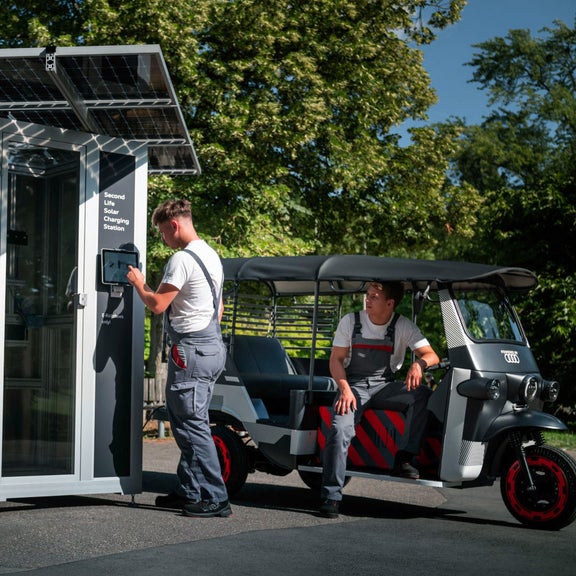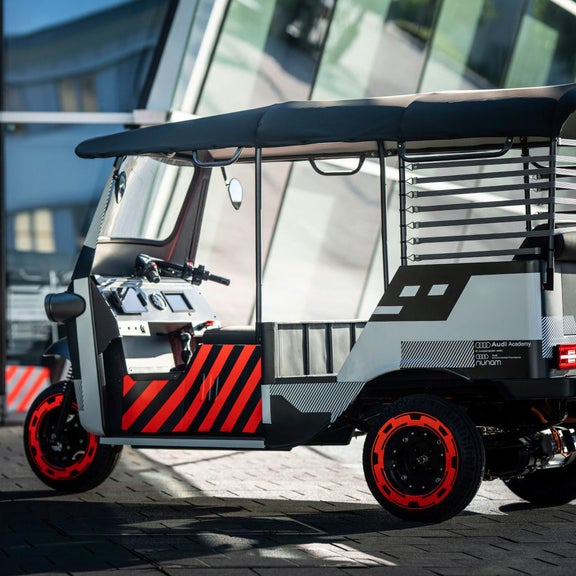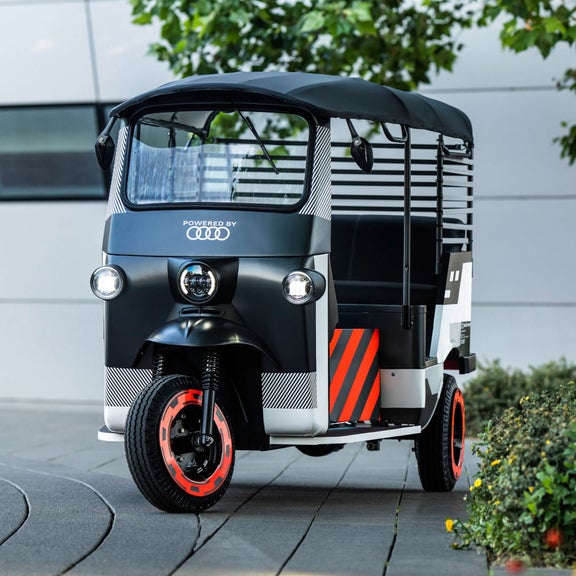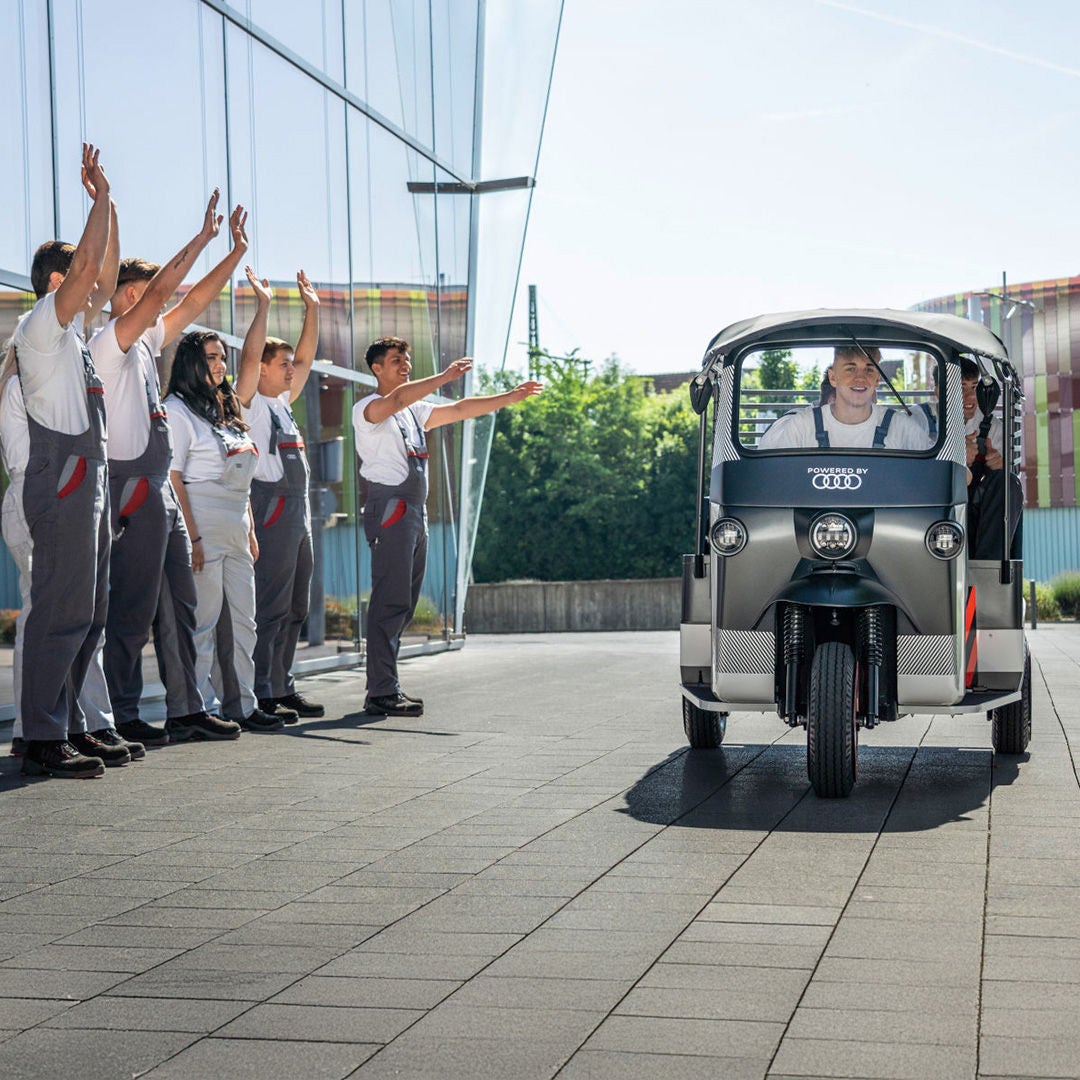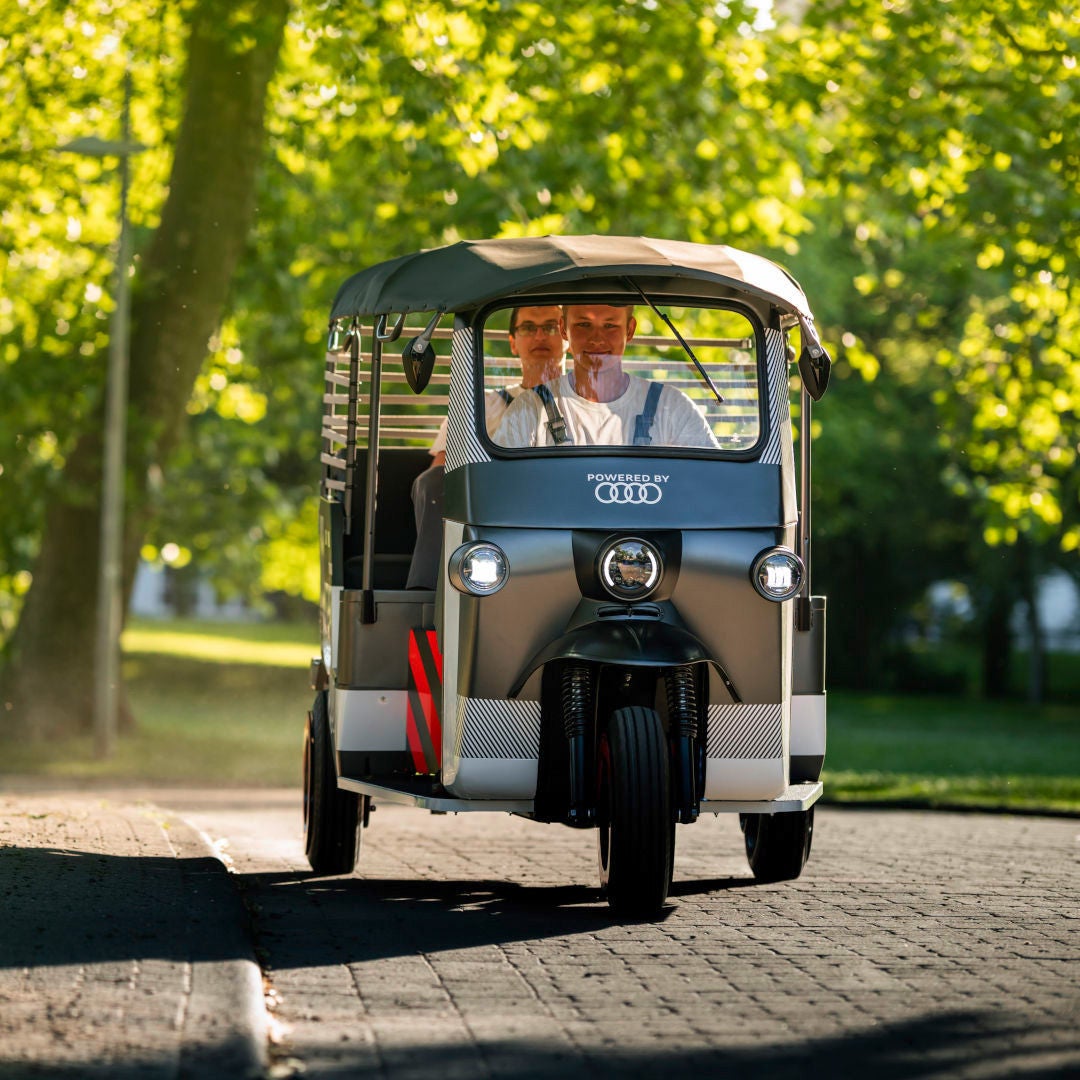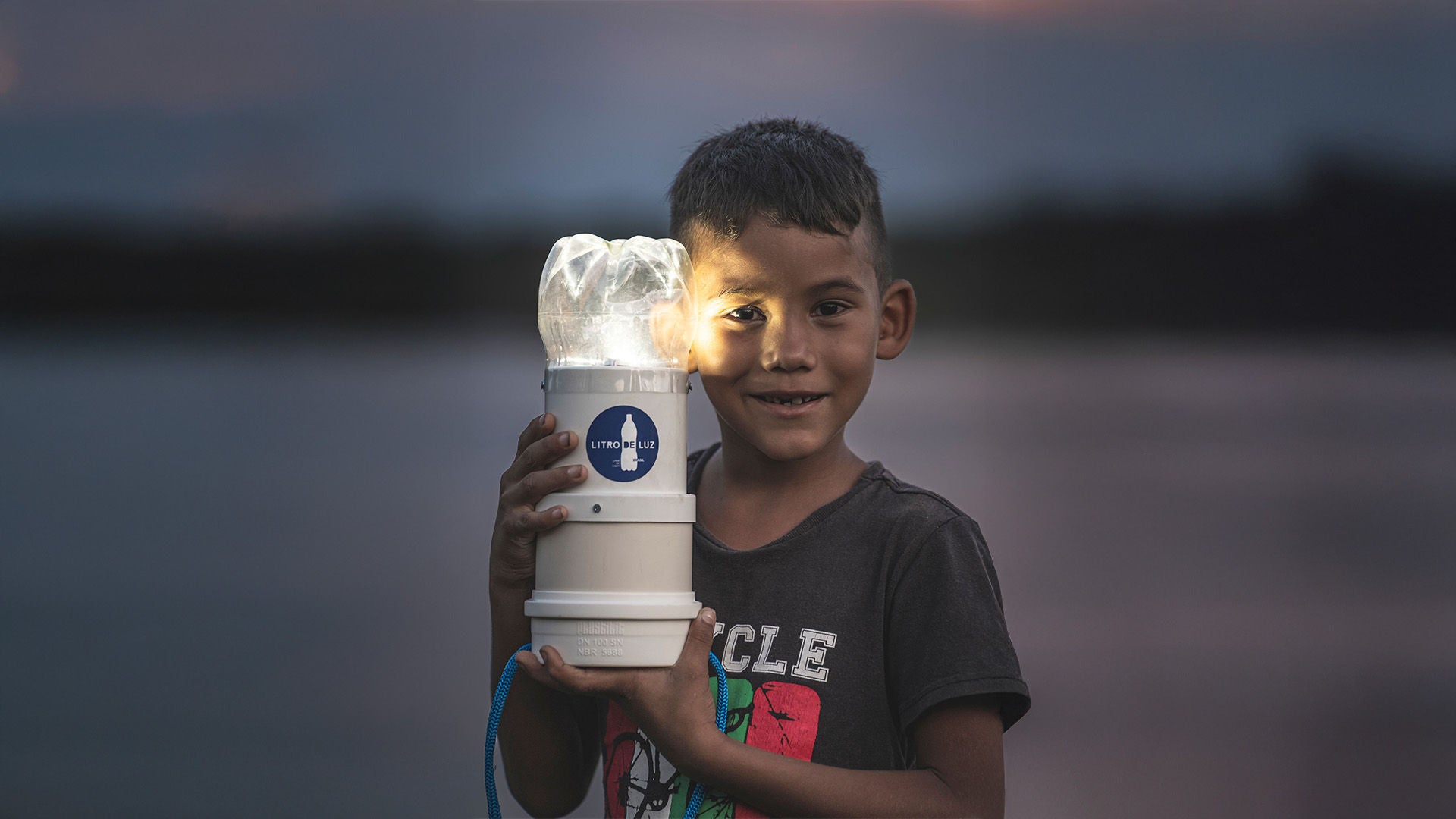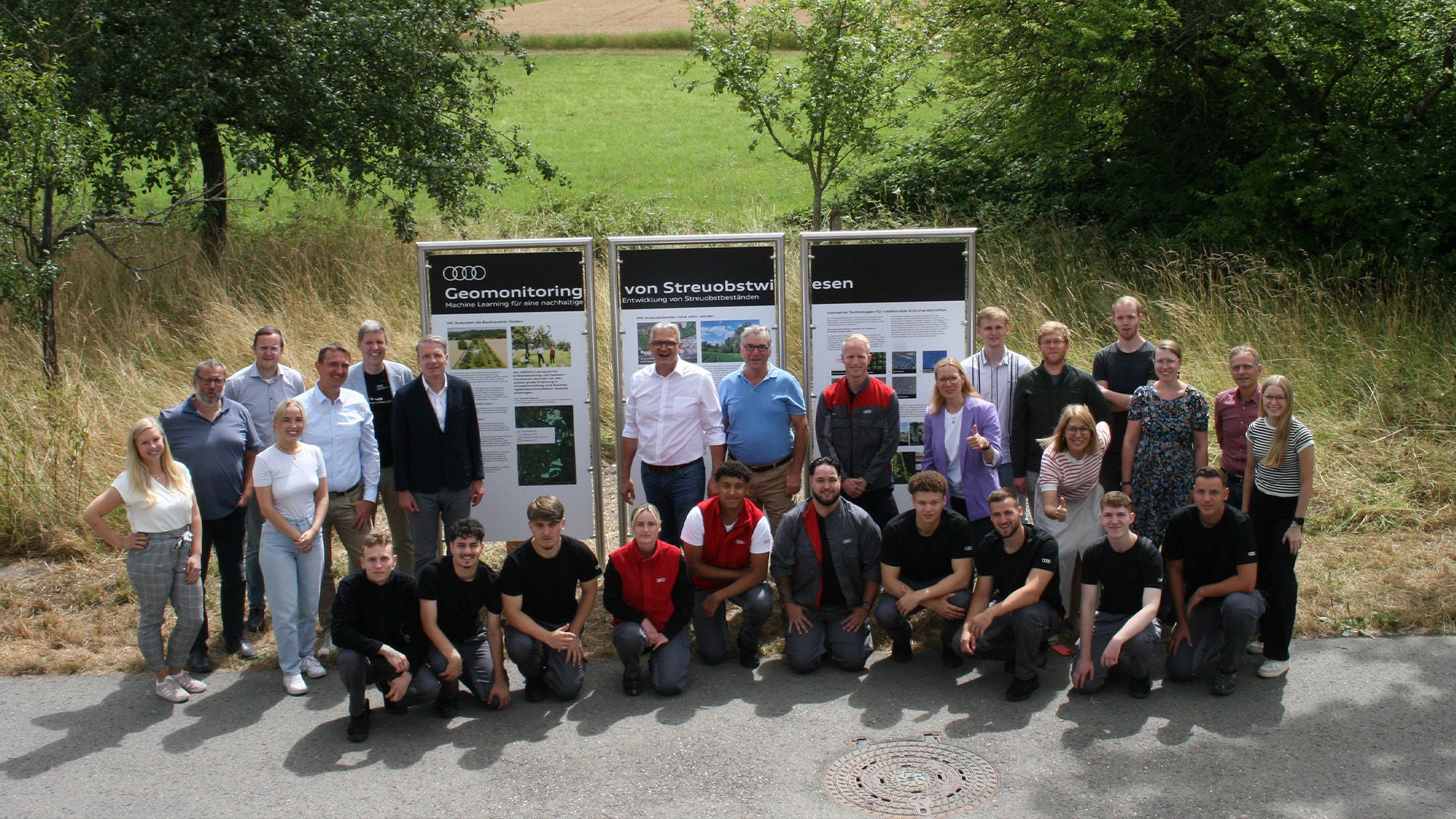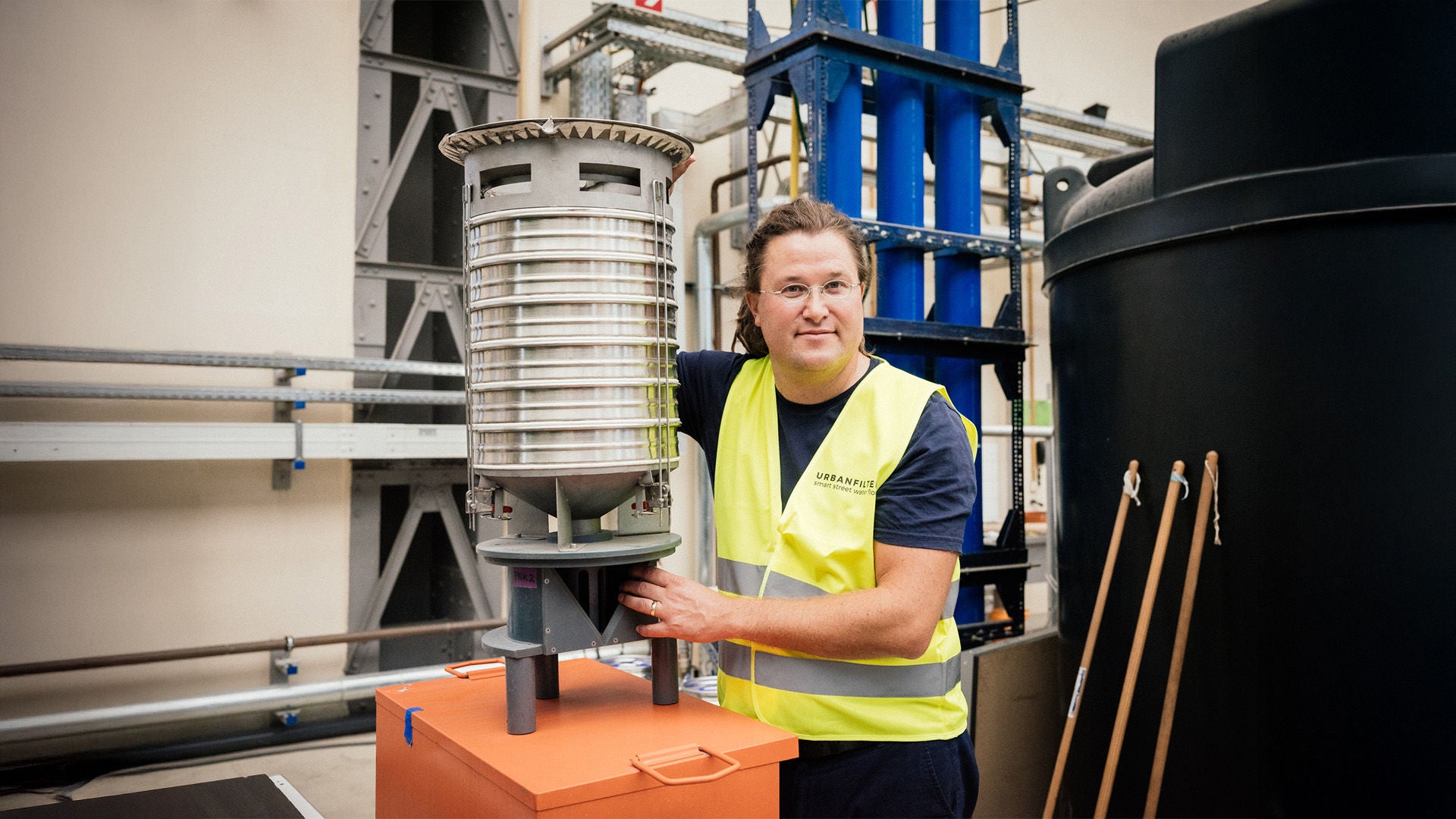Mobile use of second-life batteries
What others consider electronic waste is a valuable resource for the start-up “Nunam”, a project partner of the Audi Environmental Foundation: lithium-ion cells from discarded laptop batteries or battery modules from electric vehicles that are no longer used. The German-Indian start-up is now developing a mobile application initiated by co-founder Prodip Chatterjee.
11/18/2022 – Reading Time: 1 min
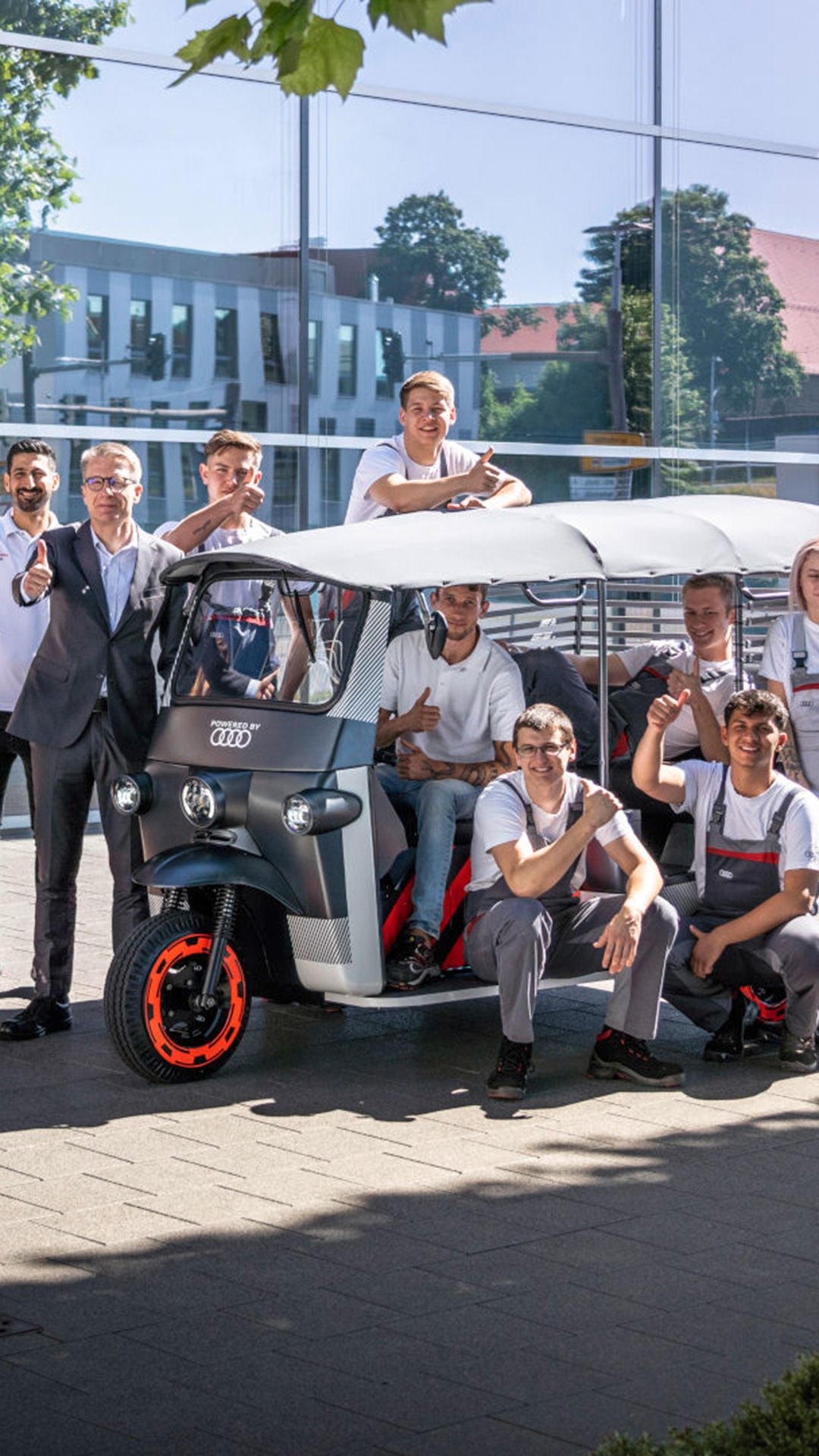
In the first stage of the project, the power storage systems based on old laptop batteries were passed on to greengrocers in India by Nunam. They benefited by being able to use the storage to supply electricity to low-power consumers such as smartphones or lamps. This enabled them to keep their stalls open at the market even after dark or in the evening, thus gaining more economic autonomy. In a next step, Nunam developed and tested larger and more powerful stationary power storage systems based on used Audi e-tron battery modules from test vehicles, supported by the Audi Environmental Foundation. These have been successfully used, for example, to illuminate entire streets in India or to provide a constant power supply in so-called community centers.
But these applications weren’t quite a challenge for the used e-tron modules - they have much more power. Therefore, Nunam is developing a mobile application for these second-life power storage systems in a next step. On the one hand, rickshaws are now being electrified and, on the other hand, charging stations are being built for these rickshaws to temporarily store green solar power while the rickshaws are on the road during the day.
With the so-called e-rickshaws, Nunam enables sustainable and green mobility in India. For example, they help to reduce exhaust emissions and smog in cities. In addition, their sustainability is based on their drive: the power storage system built by Nunam from used battery modules of Audi e-trons. The battery modules, which may no longer fully serve their original purpose in an Audi e-tron, are used for a second time. Normally, their performance is still sufficient to drive smaller and lighter vehicles such as e-rickshaws over shorter distances.
In addition, Nunam continues to build stationary power storage systems from used battery modules to charge the e-rickshaws. These power storage systems are connected to solar panels that produce green solar power and store it until the e-rickshaw needs to be charged. This principle is particularly useful in India, where the global solar radiation is significantly higher than in Germany. As a result, there is more solar power, which in turn can be absorbed by the power storage systems.
The idea of building an e-rickshaw from second life components inspired the trainees in various technical professions at AUDI AG. So, a group of 14 trainees at the Neckarsulm site got together and, with the support of their Training Manager Timo Engler, built a show car where, in addition to the battery modules, several other second-life components from Audi models were reused.
